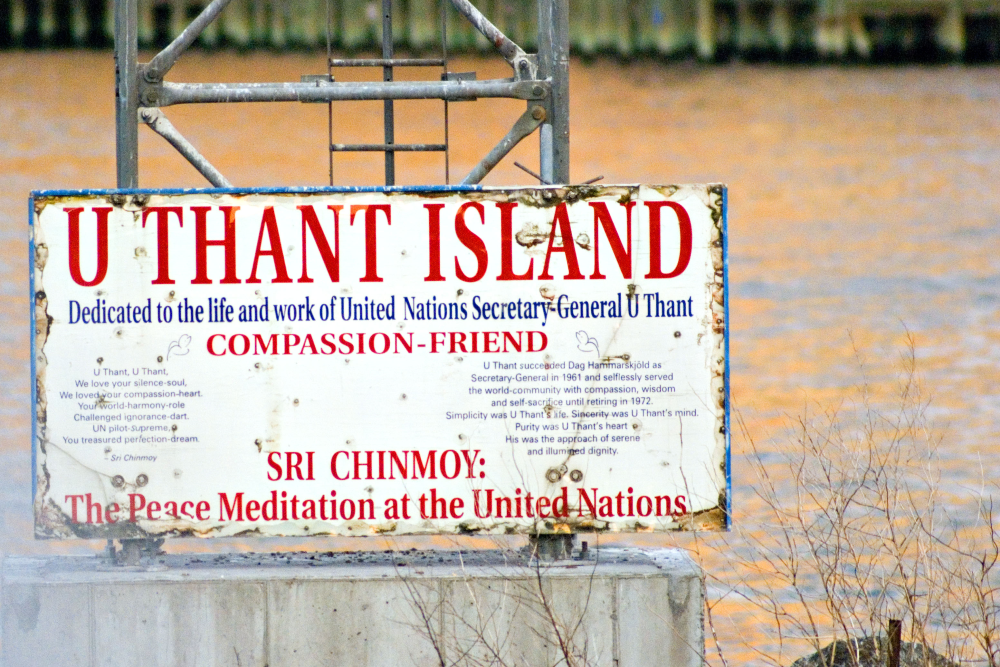U Thant Island, officially known as Belmont Island, is a miniature spit of land that sits between New York’s Manhattan and Queens. It was heaved into existence when a piano manufacturer began construction on a tunnel beneath the East River, dumping the resulting materials until a half-acre island emerged from the water.
The tunnel project was started by piano maker William Steinway in the 1890s and completed by August Belmont Junior, explains Atlas Obscura, which is why the resulting landfill became officially known as Belmont Island when it was finished in the early 1900s. However, come 1977, it was rented and renamed by the Buddhist group the “Peace Meditation At The United Nations” in honor of Secretary-General U Thant of the UN, three years after his death.
The metal structures that can be seen sticking up from the small patch of greenery on U Thant Island include the “oneness arch,” a lattice of steel tubing that stretches up to 9 meters (30 feet) above the ground. A vessel is buried underneath it containing some of U Thant’s statements about peace and spirituality, as well as his favorite tie clasp.
A symbol of spirituality, the “living shrine” was visited periodically by the Peace Mediation At The UN group for ceremonies and maintenance. This continued until around the 1990s due to the island’s proximity to the United Nations building that was hiking up its security at this time.

Secretary General U Thant’s dedication on U Thant Island.
Google “U Thant Island” and you’ll see a lot of mention of the fact that nobody’s allowed to visit it, but it’s not just because of security. Despite its small size, U Thant Island is a vital habitat for some of New York’s protected birds. Its remote location and vegetation mean it’s a convenient spot for nesting and a safe place to rest for birds that have made a long journey to reach it.
In a city as busy and urban as New York, even small sanctuaries like U Thant Island represent a vital habitat.
Migrating birds that visit U Thant Island include cormorants, and the New York State Government’s efforts to conserve them have seen the population double from 2000 to 2011. The surrounding waters are a popular spot for fishers trying to catch deep-swimming striped bass and bluefish, but since the island is officially a Recognized Ecological Complex under the city’s Waterfront Revitalization Program, it’s a no-go zone for human feet.
The Hudson River is a spawning ground for striped bass, which are an anadromous fish, meaning they have to move between saltwater and freshwater to breed. Therefore, U Thant Island in the East River – that’s attached to the Hudson, and isn’t technically a river – is probably a passing point for bass trying to get there. They’ll have to contend with the voracious appetites of predatory bluefish that use their sharp teeth and powerful jaws to munch on everything from fish to crustaceans and squid.
So as you can see, U Thant Island’s got a lot going on for a small spit of landfill.
[H/T: Untapped New York]
Source Link: U Thant Island: Why Nobody Can Visit New York's Smallest Island